All about embedded spots

Today, no one has any problems with the choice of lighting devices in the house. There is a wide variety of lamps and lamps on the market. Therefore, finding something suitable for a particular interior will not be difficult. In this article, we will consider embedded spots, their features and types.
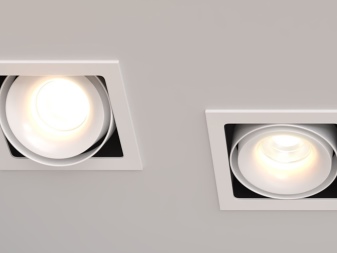
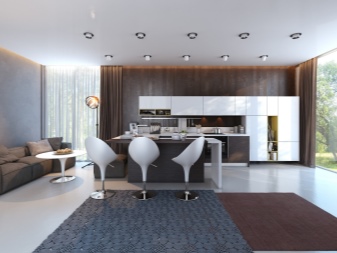
Peculiarities
Spots are not only an effective lighting device, but also a necessary detail in the interior. Spot, if you translate the word from English, means a spot or a point, therefore the use of such lamps is often called spot lighting.
The main feature of the spotlight is its small size. Therefore, it is used to create the necessary atmosphere in the room or for lighting.
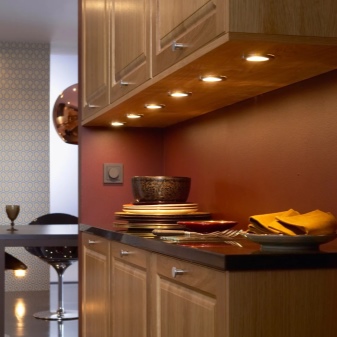
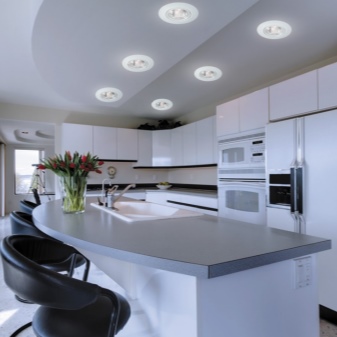
This type is not suitable for high-grade lighting. It will rather be auxiliary than the main one.
Recessed luminaires are used for illumination in showcases, rooms, offices. The main task is the need to illuminate something at a specific point, zone or highlight a specific place, corner, highlight furniture or photographs with light.
In rooms, especially large ones, spots are always combined with another main light to create a complete picture.

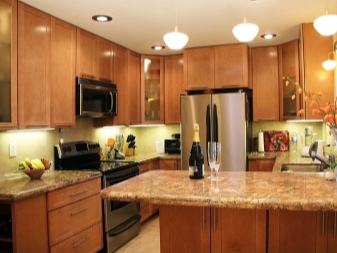
Description of species
Before choosing one or another lighting option, you should always familiarize yourself with the types. Spots are unique lamps, there are quite a large number of designer models, but mainly there are several types on the market.
-
Wall mounted. There are single and double. They are a highly directional light source. They are usually mounted vertically. Used to illuminate paintings, photographs or shelves. By installing a low voltage light bulb, it can be used as a night light.

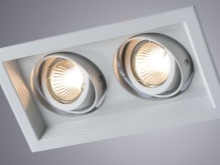
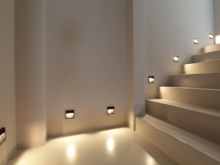
- Ceiling. Such spots are used for additional lighting; they can partially replace the central light. If the lamps are hinged, then playing with the position is quite easy, you just need to change the angle. For built-in luminaires in the ceiling, it is necessary to select such models that can be adjusted. Typically, such lighting is chosen in order to save space. For example, the room has low ceilings, and it is very problematic to hang a large chandelier, but flat spots in the ceiling will be in place.
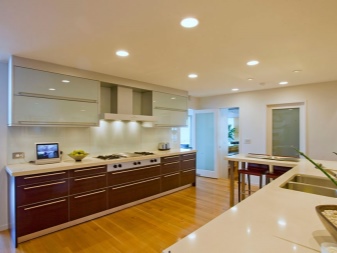
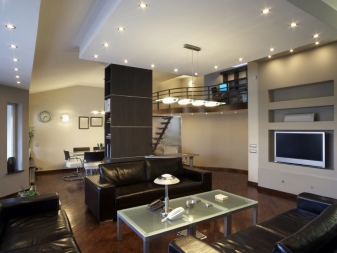
- On a rod or on a bracket. The next most popular type of lighting are spots on a rod or bracket, they are also called complex combined devices. Such a simple design can contain several reflectors, from 3 to 5 on average, but if the room is large, then the calculation will proceed from the area that needs to be illuminated. Usually they are combined into one straight line, the rod itself can be flat or curved at the corners (such a rod is made of flexible material that is easy to assemble). When using programs, for example, "smart home", lamps can be tuned to a certain wave, or set them specific goals. You can put a motion sensor so that the lamps turn in the right direction or just turn on. Suitable for office premises, as they illuminate the space as much as possible.
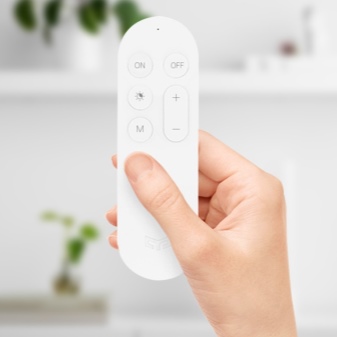

- Overhead. Such reflectors are mounted tightly to the plane (wall, ceiling, cabinet) and have a limited ability to rotate, small in size, and U-shaped. Requires no additional niches or surface drills. Therefore, they are considered one of the most popular types.And also linear LED lamps can be overhead.
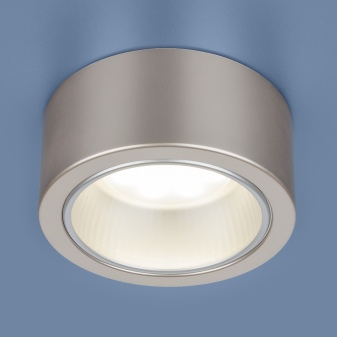
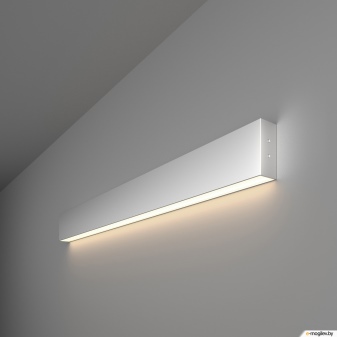
By construction type
Spots are divided not only by type, but also by design. To determine exactly which reflectors are needed, you need to understand what exactly you want to light. Because each type of design is more convenient in one case or another. Let's consider the main types.
-
Swivel. The lighting angle can be adjusted. They are used to highlight a specific composition with light.

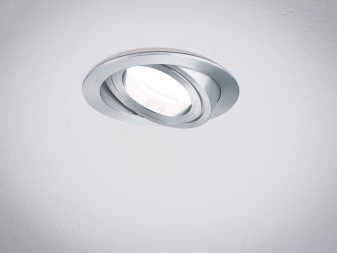
- Fixed. They are usually installed in cabinets for lighting or in the ceiling for additional or shadow lighting.

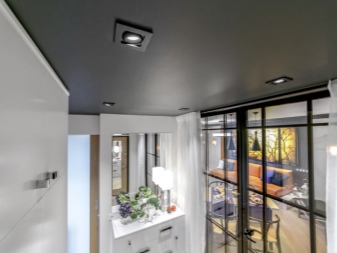
- Gimbal spotlights. This is a small exposition of 2-4 reflectors that are built into the surface with a special additional niche. The bezel is usually square and 5 cm thick, highlighting the luminaire significantly on the surface.


- Downlight. Compact reflectors for powerful and direct light output. A distinctive feature is that the light is not scattered, but focused on a specific selected object. Quite easy installation.


Each of the types carries certain characteristics, as well as positive and negative qualities that must be taken into account.
For example, turning spots have the ability to change the angle of illumination and its intensity, which cannot be said about fixed or downlights, which shine aimed at one specific object.
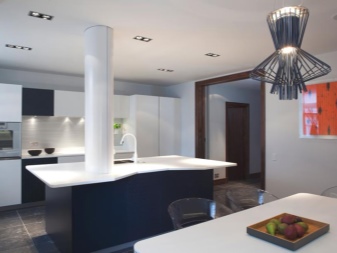
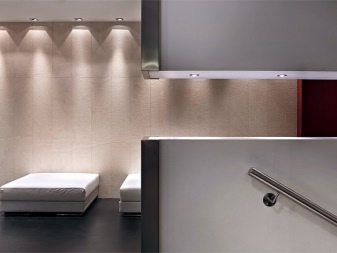
By form
There are a large number of different forms of spots on the market. They are divided into classic and complex.
The classic ones are: round, square, spherical, drop.
Complex: flower, shells, waterfall.
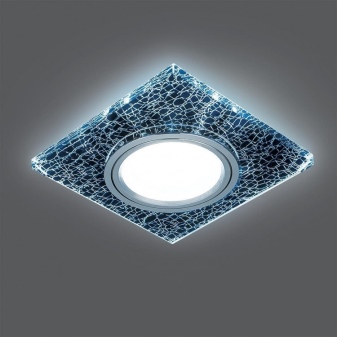
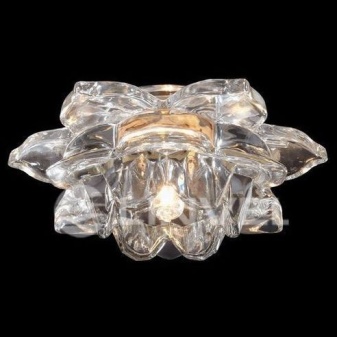
By type of lamps
In addition to the lampshades themselves, lamps are an integral part of the light source. The lamps themselves are divided into three types: incandescent, LED, halogen.
Previously, incandescent bulbs were the most common option. They are affordable, inexpensive. But cheaper is not always better. This type breaks down too quickly, consumes too much energy, and also, due to the heating of the flask itself, the plafond heats up, which can contribute to its deformation (if there are any plastic parts).
LED lamps, also called LEDs, are also popular. A variety of variations of these lamps are now presented. There are various shapes and sizes that are ideal for a particular design.
In terms of performance, it is a more profitable option, that is, such a lamp will last much longer than an incandescent lamp.
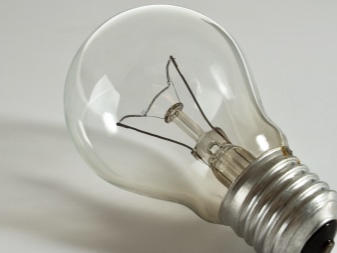

Design options
Spots can be made in a variety of styles and colors. Everything will depend on the chosen design, there are no restrictions on this.
If the design of the room is in a classic style, then it is better to choose illuminators with rounded lines, the color of the material should be light, and the light bulb should have a cold white glow.
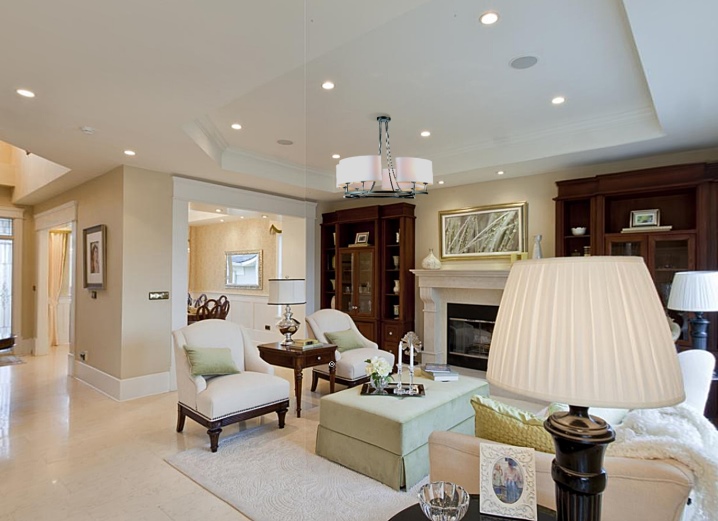
For a modern interior, clearer lines are suitable. Material - metal or glass, the color of the shade can be strict black or any other.
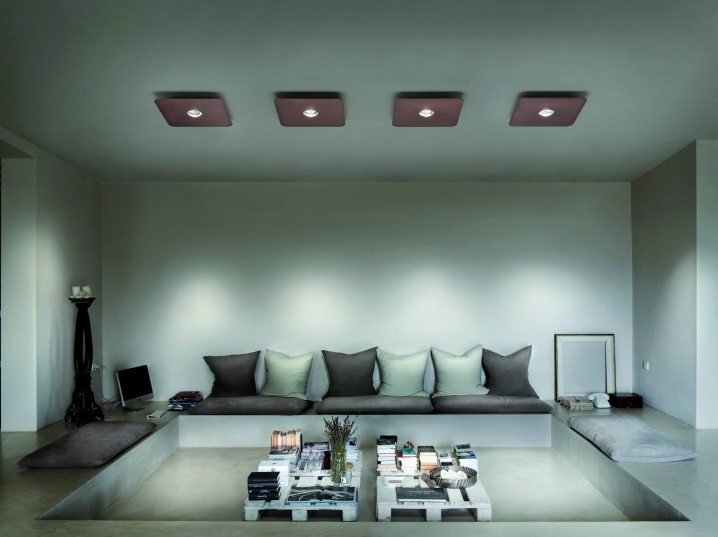
It is best to choose non-standard stylish spots for the hall, which will harmoniously fit into the idea and at the same time look like an exquisite and expensive decoration of the room.
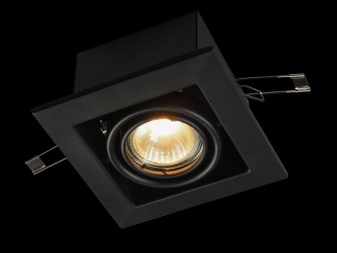
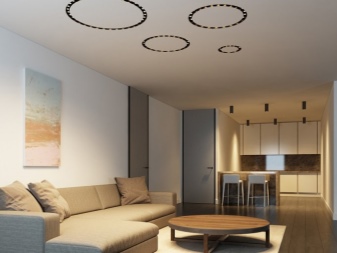
For the kitchen, double models on a frame or gimbal lamps are suitable.
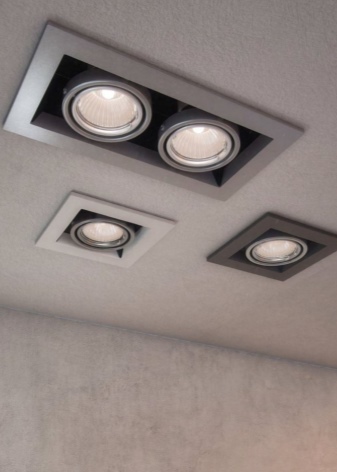
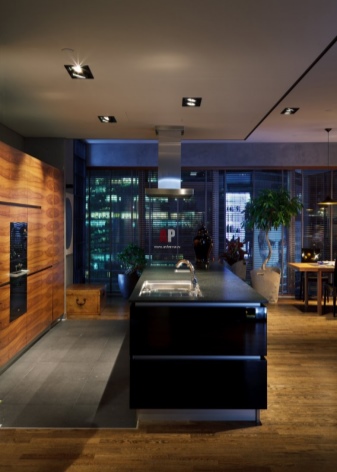
The most common use of recessed spots is in the bedroom.
There is no need for a large amount of light, but only a subdued version. They are usually built into the ceiling around the perimeter of the bedroom or into wardrobes.

Nuances of choice
Each model always has advantages and disadvantages. Let's start with the positive aspects.
Economy is something that many pay attention to right away. All thanks to LED lamps that consume less energy. The structure of the spot is not fragile. There are no small parts or any spirals in it, so the case is very resistant to mechanical damage.
Large range of temperature differences. Such structures are often used outdoors, as they can work both at very high temperatures and at very low temperatures. There are also special waterproof spotlights for the bathroom. They are in perfect harmony with any design, and are also safe to use.

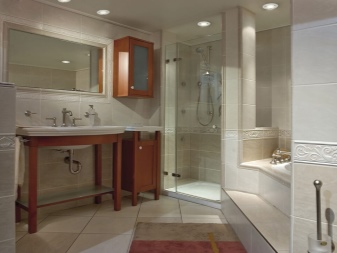
Now let's move on to the disadvantages.
One of the disadvantages is that such lamps have a limited flux of light, that is, they shine directly on the object. And with the wrong choice, the room will be lit with spots, and not with a beautiful smooth glow.
Halogen bulbs are a great energy-efficient option, but they are too sensitive to voltage surges. Because of this, they quickly fail.
High price. In order to harmoniously distribute the light around the room with a point light, you will have to purchase several of these lamps.
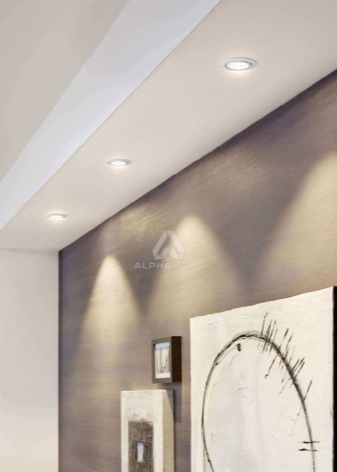
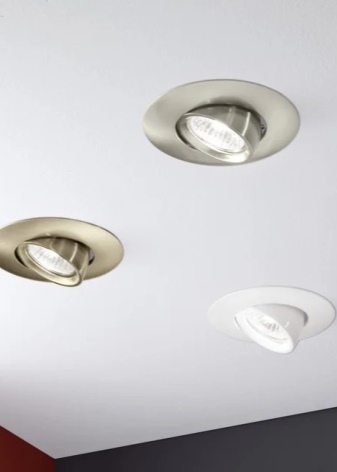
Installation tips
It is worth remembering that any equipment must be properly installed, like lighting fixtures. There are a number of certain points that you should adhere to when installing yourself.
-
It is best to purchase spots from the same manufacturer, since it will be easier to install the structure, since they will be identical.
-
Lamps should be chosen with a power of no more than 40 watts. If you buy more power, you will have to additionally buy a step-down transformer. If you purchase a transformer, then to determine its power, it is necessary to add the power of all lamps.
-
Install a cable from spots with additional protection (insulation).
-
For stretch ceilings (film, fabric), it is recommended not to choose bulbs in spots that will generate heat.
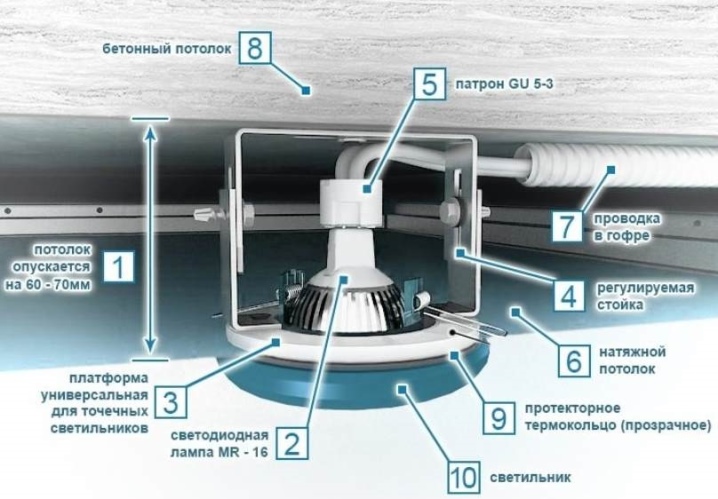












The comment was sent successfully.